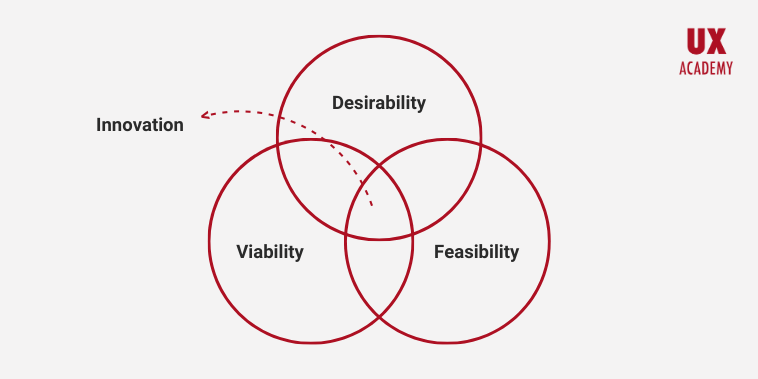What is Design Thinking?
Design thinking is an ideology and process in UX design that has a user-centred approach to solving problems. Within UX design, the user’s interactions and experience are at the centre. Similarly, design thinking places the user at the centre of the process to understand their needs and requirements.
Explore the powerful realm of Design Thinking in our UX/UI Design Course. Design thinking is accessible to UX designers of all levels, ranging from beginners to advanced.
Why is it Important?
Design thinking offers many advantages. Firstly, it fosters an innovative and imaginative approach to solving user problems. This empowers designers to break free from conventional methods and explore fresh solutions. By challenging assumptions, designers uncover user pain points that might have gone unnoticed otherwise. This process enables them to create user-centric and impactful designs.
By adopting this process, businesses can stand out with a user-friendly experience. This helps to keep customers loyal.
The 5 Stages of Design Thinking
- Empathise is about understanding the problem from others’ perspective. It helps designers know what users need.
- Define – we use the information we learned in the empathise stage to figure out what problems we need to solve. It’s like making a list of the things we need to fix.
- Ideate – you’re ready to generate ideas to solve the problems found.
- Prototype – we can design a mock-up of our product to see how it looks and works.
- Test – now we put the product to the test. It’s important to note that the testing stage doesn’t always mean we’re done. It often gives us new insights and ideas to keep improving the product.
Not a designer? No worries!
Design thinking is never a linear process and that is what makes it special. It is a universal concept that helps you create excellent solutions, no matter what industry you’re in. It’s a powerful tool for problem-solving and innovation. When you use design thinking, you learn more about the people who will use your design and what they need. It helps you see design in a whole new way, not just how it looks, but how it helps and suits the end-users.
Desirability, Viability, Feasibility
Feasibility – can we make it?
Whether you’re eager to kickstart a career in UX design or simply curious to learn more, we offer a variety of UX courses. Click here to explore and find the perfect fit for you.


